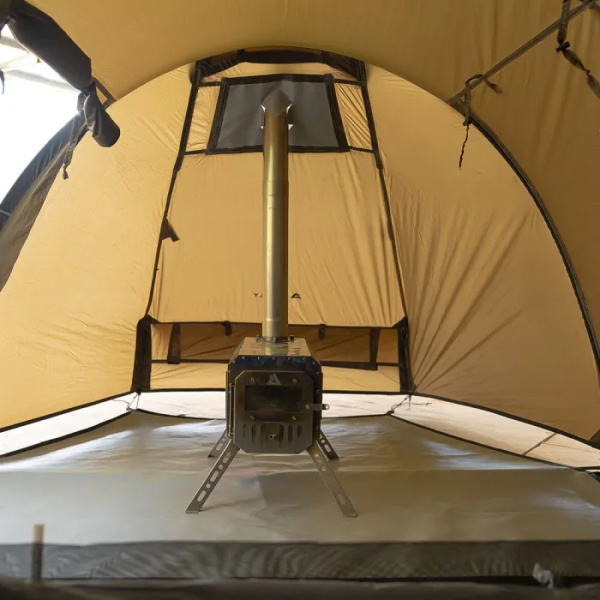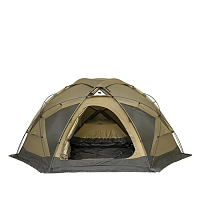Cart
What is a Tent Footprint, and Why is it Important?

Intro:
If you're new to camping or have recently purchased a tent, you may have come across the term "tent footprint" and wondered, "What is a tent footprint?" This article will explain what a tent footprint is, why it's important, and how it can enhance your overall camping experience. We will also discuss what a tent footprint is used for and what a tent footprint does to protect your tent.
-
What is a Tent Footprint?

A tent footprint is a groundsheet or protective layer placed beneath your tent's floor. It is typically made of durable, water-resistant material like polyethylene or polyester. The primary purpose of a tent footprint is to protect your tent's floor from wear, tear, and damage caused by rough terrain, rocks, and roots.
-
What is a Tent Footprint Used For?
The main function of a tent footprint is to provide a barrier between your tent's floor and the ground, protecting it from punctures, abrasions, and moisture. By doing so, it extends the life of your tent and helps maintain its waterproof capabilities. Additionally, a tent footprint can provide an extra layer of insulation, keeping the cold and damp ground from making you uncomfortable during your camping trip.
-
What Does a Tent Footprint Do?
A tent footprint serves several essential functions, including:
a. Protection: As mentioned earlier, a tent footprint protects your tent's floor from damage, increasing its lifespan and saving you money in the long run.
b. Waterproofing: A high-quality tent footprint can help prevent water from seeping through the tent floor, keeping you and your belongings dry during wet weather.
c. Insulation: By creating a barrier between your tent floor and the ground, a tent footprint can help retain heat inside the tent and reduce heat loss through conduction.
d. Cleanliness: A tent footprint makes it easier to clean up after your camping trip, as you can simply shake off dirt and debris from the footprint rather than the tent itself.
-
Choosing the Right Tent Footprint
When selecting a tent footprint, consider the following factors:
a. Size: Ensure the footprint is the correct size for your tent, as it should be slightly smaller than the tent floor to prevent water from pooling between the footprint and the tent.
b. Material: Choose a tent footprint made from durable, water-resistant materials like polyethylene, polyester, or even more lightweight options like silnylon for backpacking.
c. Compatibility: Some tent manufacturers offer custom footprints designed specifically for their tents. These can be a great option, as they will ensure a perfect fit and optimal performance.
-
Making Your Own Tent Footprint
If you're on a budget or can't find a footprint for your specific tent model, you can create your own tent footprint using materials like polyethylene sheeting, tarp, or Tyvek. Just make sure to cut the footprint slightly smaller than your tent's dimensions to prevent water from pooling between the layers.

Conclusion:
Understanding what a tent footprint is and its importance is crucial for anyone who wants to protect their hot tent and have a comfortable camping experience. By using a tent footprint, you can extend the life of your tent, improve its waterproofing, and enjoy better insulation and cleanliness. Whether you purchase a custom footprint or create your own, this simple addition can make a significant difference in your camping adventures.
Read More.
How to Choose an Foldable Camping Table for Hot Tent Camping?
What is a tent footprint, why is it important?
What Are the Necessary Hiking Gear for Outdoor Camping?
5 Tips to Help You Choose a Hunter Backpack for Outdoor Camping
7 Steps to Teach You Tie a Taut Line Hitch
20 Camping Essentials | Camping Gears Lis
- Contact Us
-

About Pomoly
Pomoly is a leading camping brand specializing in hot tents and tent stoves. We are camping life explorer, Follow Page / Join Group, let's make camping enjoyful together!
Working Hours
Mon-Fri, 09:00 - 17:00

- Company Info
- NEWS
- About us
- Pomoly Name
- Leave-No-Trace
- Contact Now
- Facebook Group
- YouTube Learning
- Contact Us
- Topic Collections
- Policies & Terms
- Payment Policy
- Shipping Policy
- Return & Refund
- Privacy Policy
- Terms of Use
- Tax Policy
- Website Disclaimer
- Safety Disclaimer
- Warranty Policy
- Promotion Policy
- Pre-order Policy
- INTELLECTUAL PROPERTY RIGHTS
- Dealers Agreement And Terms
- Become Affiliate
- User Center
- Forget Password
- My Orders
- Tracking Order
- My Account
- Register
- Popular Searches
-
Tipi Tents Dome Tents Camping Tent Hammock Stove Camping Camping Pellet Stove Circle 6 Titanium Water TankDome X Locomotive 20 LEO 2 camping tent T-Brick 2.0 T1 2.0 tent stove Dweller wood stove Oroqen 2.0 Chimney Water Tank Lumberjack STOVEHUT Bromance 70 Tipi Pomoly Coupon Baker Oven Stove Titanium elbow Fire Pits Tent Stove titanium Stove Outdoor Pellet Stove
keebon pellet stove






